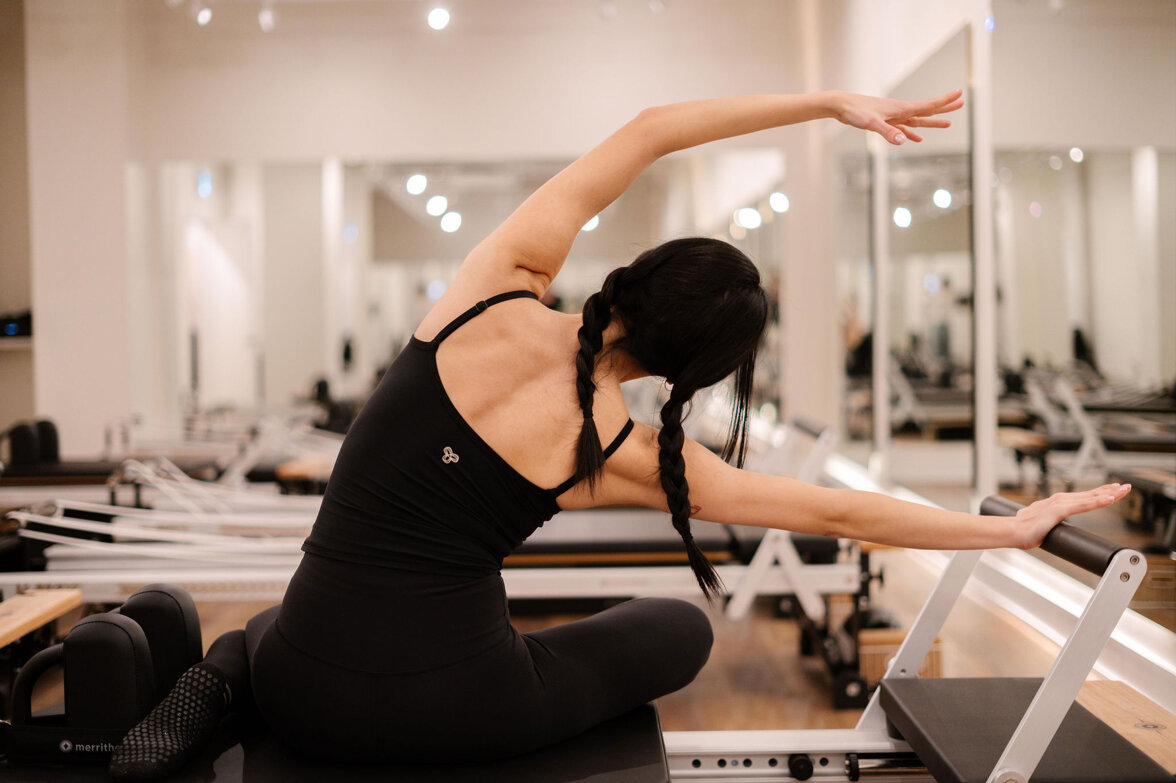
PROFESSIONAL DANCE CENTER
Centro di Specializzazione Danza Contemporanea
Centro Produzioni e Coreografie
Salerno - Firenze (Italy)
P.IVA 06242870654
director: Prof.ssa Sabrina Saturno
Ufficio Corsi e Formazione:
International Relations:
Stampa & Media:
Director Prof.ssa Saturno:
prof.sabrinasaturno@gmail.com
Pilates Studio
Corsi e Formazione metodo Pilates
SATURNO
PROFESSIONAL DANCE CENTER
contemporary dance education & productions
What it is
Pilates is a form of exercise and body conditioning developed by Joseph Pilates in the early 20th century, mostly as a method of injury recovery for dancers.
Pilates is a full-body, low-impact workout that promotes strength, stability, flexibility, posture, balance, body control, awareness and nand alignment, ultimately helping you move with greater ease and fluidity in everyday life. In Pilates, there’s a strong emphasis on core stability and strength, with the muscles in the center of the body, such as the abdominal muscles, low back muscles, pelvic floor and hip muscles, driving and supporting the movements in time with the breath. While Pilates is often associated with core strength, it also targets muscles in the arms, back and legs, activating both the large muscle movers and small stabilizer muscles.

Who is pilates for?
Pilates can be adapted o benefit a wide range of people, from beginners to regular exercisers, elite athletes, dancers, rehab clients, children, seniors, pre- and post-natal clients, and people with disabilities.
With thousands of exercise modifications and equipment options to either increase or decrease the challenge, Pilates can be adjusted to suit each individual’s needs and abilities, delivering a safe and effective workout for everyone. Applying an integrated, full-body approach to improving strength, flexibility, endurance and body conditioning, Pilates is the perfect complement to cardiovascular activity, strength training, rehabilitation or restorative exercise. For athletes, including dancers, golfers, runners, cyclists, football and hockey players, it’s often incorporated into their training to enhance mobility, agility, and overall performance. With its focus on mindful breathing, body awareness and mind-body connection, Pilates also offers stress-relief benefits and is often sought-after by people recovering from injuries, dealing with chronic pain or looking to prevent injuries.

Pilates is based on biomechanics, which is the science of how and why the body moves the way it does. Biomechanics involves the principles of motion, force and momentum. Pilates applies these concepts and can be modified, progressed and regressed on its own or with equipment and props to ensure it is beneficial for anyone. Beyond just the mechanical aspect, Pilates also incorporates the idea of ‘biotensegrity’ which speaks more to how the muscular and fascial systems work together to create efficient movement.

Joseph Pilates’s theories were founded on six fundamental principles:
Breathing: Pumping the air in and out of the body with a forced breath using full inhales and exhales.
Centering: Maintaining mental and physical focus during each exercise. Pilates referred to the area between the ribs and hips as the ‘powerhouse’.
Concentration: Valuing the quality and form of each movement over the number of reps. Pilates believed that it was necessary to maintain inner focus, paying close attention to the specifics and details of every exercise.
Control: Emphasizing control of the entire body at all times with an awareness of how the parts move together.
Flow: Emphasizing continuous movement, flowing from one exercise to the next, while maintaining an aesthetic quality.
Precision: Performing each exercise with precision, step-by-step as given, paying close attention to placement, alignment and trajectory for each moving part of the body.